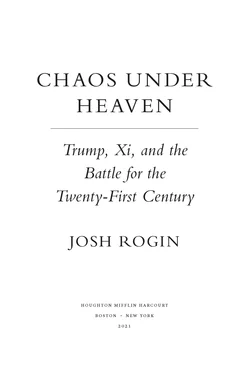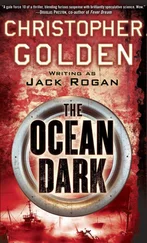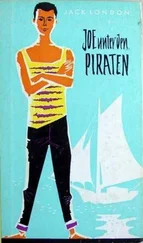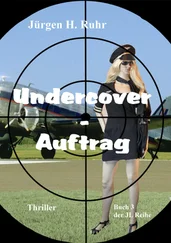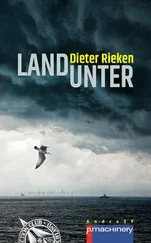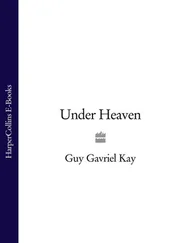“You can earn points by doing good on the tests or you have to tell the director something that happened in the room, like spying on others,” she said. “That’s the really scary part. We were afraid of each other.”
But Vera’s nightmare was just beginning.
She was eventually released five months later with no explanation, although she was told to stay inside her father’s apartment and told cameras on the street would recognize her face if she disobeyed. She still didn’t have her US passport or her green card, so she couldn’t leave China.
Back in Seattle, her mother, Mary Caiyun Ma, was furiously trying to get her daughter help. She called the University of Washington, but they said there was nothing they could do to help. Adding insult to injury, the university kept billing Vera tuition and then trying to collect the unpaid debt. Her federal loans lapsed. Her unpaid rent destroyed her credit.
Finally, Ma got in touch with Pastor Bob Fu, a nongovernmental organization leader with good connections in DC. Fu got her meetings with the State Department, the National Security Council, and members of Congress. The State Department officials reached out to the Office of the President at the University of Washington, with Vera’s mom and Bob Fu in the room. The response from the university official was chilling.
“They said bluntly we can’t do anything for her, we have a $3 million deal negotiated with China,” said Fu.
The State Department pressed the Chinese government to let Zhou leave China and return to the United States. On September 15, 2019, the authorities gave her back her passport. They told her not to speak out about the camps and threatened her father’s safety if she disobeyed. She returned to Seattle with no school, no apartment, and no job. She spoke out, despite the threats, because she wants people to know the truth.
“What they did to a lot of people, this should be published,” she told me. “We have a right to know what they are doing to those Uyghurs and Kazakhs and other innocent people.”
Despite Trump’s comment to Xi endorsing the Uyghur internment camps, the US government did gradually work to raise awareness of these atrocities and pressure the rest of the international community to respond. In September 2019, the State Department hosted an event featuring camp survivors on the sideline of the UN General Assembly in New York. Later, the State and Treasury Departments would sanction Chinese officials involved in the repression and companies profiting from the forced labor.
But like many other parts of the Trump administration’s China strategy, the effectiveness was undermined by the overall unpredictability and incoherence that characterized the Trump administration’s foreign policy. There were too many signals coming from too many different parts of the administration for anyone else to understand what they were trying to do. The State Department would try to correct this by laying out the overall argument for a Trump administration China approach in 2019. But that wouldn’t go so well either.
10
Cold War Redux
Over the cold early months of 1946, a diplomat typed away in the bowels of the American embassy in Moscow. He sent an eight-thousand-word document over the wires to the State Department in Washington, where its conclusions caused a stir. George F. Kennan’s “Long Telegram” was the first official document to warn that the Soviet Union, America’s erstwhile World War II ally, whose armies had been indispensable to defeating Hitler, now posed a direct and dire threat to US national security. Buried deep within the Soviet DNA, Kennan warned, was the belief that its security could only be ensured by a “patient but deadly struggle for total destruction of rival power.” He penned a public version that appeared in Foreign Affairs the following year under an anonymous byline “X” and entitled “The Sources of Soviet Conduct.”
These two documents were Kennan’s attempts to focus his government and the American public on what he believed was the key challenge of his time. The documents also became the basis for a decades-long policy of containment, the notion that America’s goal should be to slow down and limit the Soviet expansion at all costs. The containment policy is credited with America’s victory over the Soviet Union in the Cold War. “Letter X,” as Kennan’s anonymous essay in Foreign Affairs came to be known, argued that the Soviet threat required “a long-term, patient but firm and vigilant containment of Russian expansive tendencies.”
“Soviet pressure against the free institutions of the Western world is something that can be contained by the adroit and vigilant application of counterforce at a series of constantly shifting geographical and political points, corresponding to the shifts and maneuvers of Soviet policy, but which cannot be charmed or talked out of existence,” he wrote.
Kennan became the State Department’s first-ever director of the Office of Policy Planning, known as the department’s internal think tank, and there he helped Secretary of State George Marshall devise his plan to support Europe’s revival after the war. But Marshall’s successor, Dean Acheson, had his own ideas about how to counter Soviet expansion, and he brought on his own policy planning director, Paul Nitze, to help him implement them. Kennan had defined the problem, but Nitze and those like him got to devise the solution.
The document Nitze and his cohorts produced in 1950, called NSC 68, took Kennan’s containment theory in a distinctly militarized direction. NSC 68 was a top-secret document that painted the challenge of the Soviet Union’s rise in stark terms. “The issues that face us are momentous,” the document stated, “involving the fulfillment or destruction not only of this Republic but of civilization itself.” It called for a tripling of the US defense budget and a military buildup to prevent the Soviet Union from achieving “world domination.” The document called for the United States to rally the free world to increase its military and economic strength, as well as its nuclear arsenal.
Kennan, out of government when NSC 68 was written, rejected Nitze’s call for mass conventional and nuclear arms buildups. He believed the Soviet threat could be contained chiefly through political and economic means. When John Foster Dulles became secretary of state, Kennan warned him that US policy was becoming overconsumed by “emotional, moralistic attitudes,” which, “unless corrected, can easily carry us toward real conflict with the Russians.” For example, Kennan supported the US participation in defending South Korea from North Korean invasion in 1950, but not the plan to forcibly unite all of Korea under an anti-Soviet regime.
The fact that Kennan opposed much of the Cold War policy he is often credited with inspiring is lost on most Americans. Even in Washington, his name is casually invoked several times a month at various think tank panel events as the man who devised the Cold War plan that defeated the Soviet Union. And while it’s true, of course, that the United States won the Cold War, there’s actually no agreement on why the Soviet Union collapsed.
Was it really because the United States had fought or funded third-party proxy wars while building up a military arsenal that the Soviet state bankrupted itself trying to match? Was it the clever diplomacy embodied by the Helsinki Accords and several series of arms control agreements that drew Soviets into so many binding commitments they just couldn’t pursue their own aggression? Or was it that the people of the Soviet Union sought a better life and a better government and placed enough internal pressure on their leaders until the system cracked?
Never mind all that. On most days in Washington, the discussion boils down to a simplistic remembrance of history: Kennan crafted the Cold War containment strategy and we won the Cold War. That leads to another common refrain: we need another Kennan and another Long Telegram for the new struggle with China.
Читать дальше
